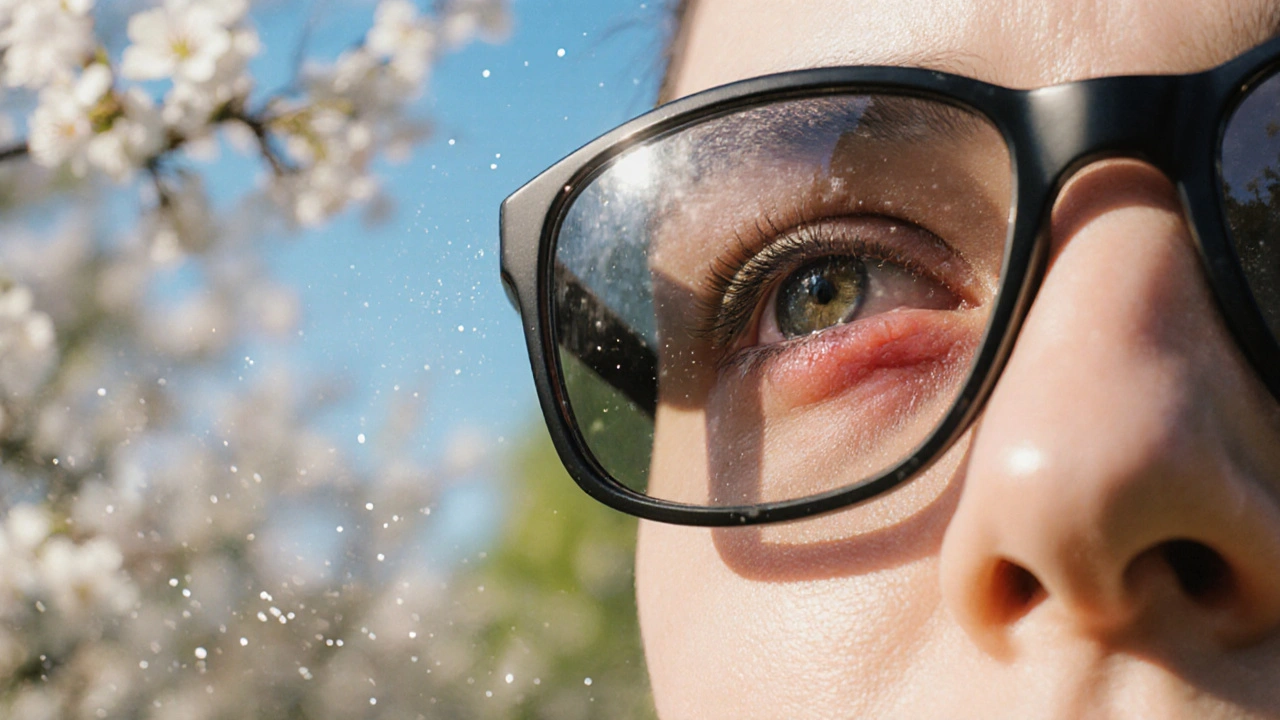Common Eye Allergy Allergens
When dealing with common eye allergy allergens, substances that trigger allergic reactions in the eyes, causing itching, redness, and watering, it helps to know exactly what you’re up against. These allergens are typically tiny particles that cling to the surface of the eye and set off an immune response. The biggest culprits are pollen, microscopic plant spores released during spring and fall, dust mites, microscopic insects that live in household fabrics and feed on dead skin cells, and pet dander, tiny flakes of skin shed by cats, dogs and other animals. Mold spores and certain cosmetics can join the mix, but the three listed above account for the majority of cases. When these particles land on the delicate lining of the eye, they bind to proteins on mast cells, prompting the release of histamine and other chemicals. That chain reaction is why you feel that burning itch or see a watery film after a walk in a park or a night cleaning the bedroom. Understanding the chain – allergen contacts eye, triggers immune response, releases histamine – is the first step toward breaking it.
How These Triggers Lead to Allergic Conjunctivitis
Allergic conjunctivitis, an inflammation of the conjunctiva caused by exposure to allergens is the medical term for the red, itchy eyes most of us have experienced. It encompasses seasonal forms (often called hay fever eye symptoms) and perennial forms that stick around year‑round, usually because indoor allergens like dust mites or pet dander are the main drivers. The severity can range from mild irritation to intense swelling that interferes with daily activities. People who already have asthma, eczema, or other allergic conditions are more likely to develop allergic conjunctivitis, because their immune systems are primed to overreact. Each allergen type brings its own pattern: pollen peaks in spring and fall, dust mite exposure stays steady indoors, and pet dander spikes when you’re close to the animal or after grooming. Recognizing these patterns lets you anticipate flare‑ups – for example, keeping windows closed on high‑pollen days or washing bedding in hot water weekly to curb dust mite numbers.
The good news is that once you know the triggers, you can take concrete steps to protect your eyes. Environmental control is the cornerstone: use HEPA filters, keep humidity below 50 % to deter dust mites, and create a pet‑free zone for sleeping. When avoidance isn’t enough, over‑the‑counter antihistamine eye drops or oral antihistamines can neutralize histamine release, providing fast relief. For stubborn cases, a doctor may prescribe mast‑cell stabilizers or corticosteroid drops, but those require careful monitoring. Allergy testing (skin prick or blood test) can pinpoint the exact allergens you react to, allowing you to tailor your avoidance strategy. In the collection below you’ll find practical guides on buying affordable generic antihistamines like Allegra and Singulair, tips for safe online pharmacy purchases, and deeper dives into managing chronic eye irritation. Ready to see how you can keep your eyes clear and comfortable? Keep reading for the tools and resources that will help you stay ahead of the itch.
- October
2
2025 - 5
Top Triggers of Allergic Conjunctivitis & Simple Ways to Avoid Them
Discover the main allergens that cause allergic conjunctivitis and learn practical steps to avoid them, from indoor dust control to smart outdoor habits.
Read More